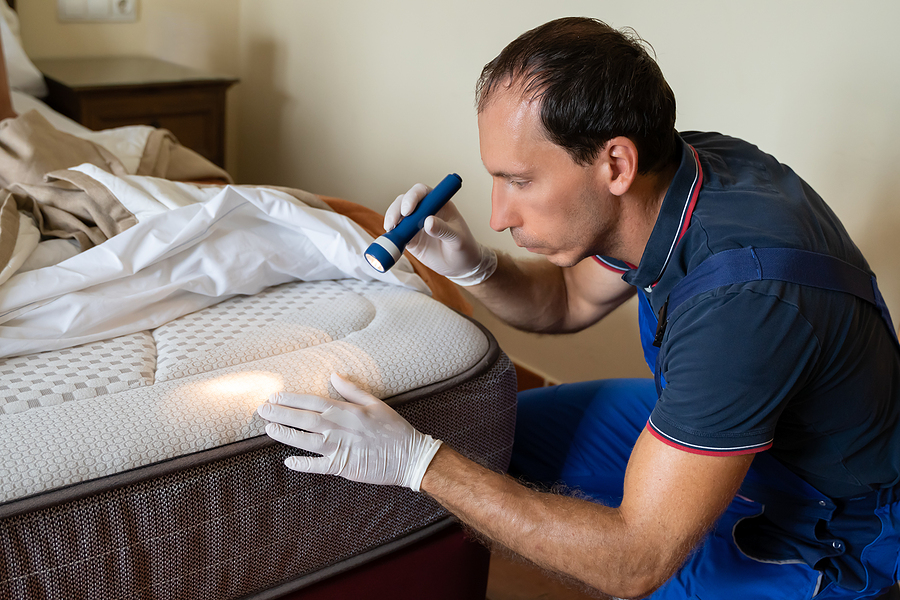Trusted DC Exterminator for Bed Bug Heat Treatment Near Me
Trusted DC Exterminator for Bed Bug Heat Treatment Near Me
Blog Article
Checking Out the Science Behind Bed Pest Heat Treatments as a Lasting Insect Monitoring Method
In the world of parasite management, the mission for reliable and lasting options remains a constant search. One such method that has actually obtained traction recently is making use of heat therapies to combat bed pest problems. By taking advantage of the science behind thermal fatality factors for these consistent pests, warmth treatments offer an encouraging option to conventional chemical-based methods. The ins and outs of just how warm effectively gets rid of bed bugs and the wider implications for sustainable pest management techniques make this a subject worth exploring better.
Bed Bug Warm Treatment Process

Thermal Fatality Factor for Bed Insects
Subjecting bed pests to elevated temperature levels beyond their thermal tolerance array is important for accomplishing effective eradication in heat therapy processes. The thermal death factor for bed insects describes the temperature at which these bugs can not make it through. Research shows that bed bugs start to perish when subjected to temperature levels over 113 ° F(45 ° C) for a sustained duration. As the temperature level boosts, so does the mortality rate of bed pests. At around 118 ° F(48 ° C ), bed insects begin to die swiftly, with a mortality rate of almost 99% within mins of direct exposure. This shows the level of sensitivity of bed insects to heats and highlights the efficiency of warm therapies in eliminating infestations. By reaching and keeping temperature levels over the thermal death factor for bed insects, parasite management professionals can make certain comprehensive removal of bed pest populaces, including hard-to-reach locations where chemical therapies might be less reliable. Comprehending the thermal fatality factor for bed insects is important for carrying out effective warmth therapy techniques and achieving sustainable insect administration outcomes.
Advantages of Heat Treatments
Having actually established the essential thermal death point for bed pests, it is essential to currently check out the substantial benefits that heat therapies offer in properly eradicating these resilient bugs. One of the primary benefits is that warm can penetrate deep into gaps and splits where bed insects conceal, ensuring that also the most hard-to-reach locations are heated to deadly temperatures.
In addition, heat therapies are ecologically pleasant and non-toxic, making them a sustainable bug management strategy. Unlike chemical pesticides, warm treatments do not leave damaging residues that can posture threats to human health and wellness or the environment. This aspect is specifically crucial in sensitive settings such as hospitals, schools, and suburbs where chemical usage may not be preferable.
In addition, warmth treatments have a high success price in getting rid of bed insect invasions in a solitary therapy, lowering the requirement for numerous visits and lessening disturbance to owners. This performance not just saves money and time yet likewise gives satisfaction to those dealing with bed pest issues.
Performance of Warmth Treatment

Study research studies have actually consistently shown the performance of heat therapies in accomplishing a high rate of bed insect mortality. Correctly conducted heat treatments can get to all the holes and splits where bed bugs might be harboring, ensuring a thorough strategy to extermination. Heat treatments have actually the included advantage of killing bed pest eggs, which are typically resistant to typical chemical treatments. Overall, the efficiency official website of warm therapies in eliminating bed bug invasions makes them a lasting and dependable insect management method.
Sustainable Bug Management Advantages
Applying lasting parasite monitoring techniques supplies lasting benefits for both the environment and public health. By using techniques such as warmth therapies for bug control, we can reduce the reliance on harmful chemical pesticides that can have adverse site impacts on environments and human wellness - DC exterminator. Sustainable insect monitoring strategies assist in maintaining biodiversity by targeting certain bugs without harming non-target microorganisms, therefore keeping a well balanced ecosystem
Furthermore, lasting pest management methods contribute to the overall wellness and wellness of the public. By lessening exposure to poisonous chemicals utilized in conventional parasite control approaches, warmth treatments give a safer alternative for pest monitoring in household, commercial, and public spaces. This decrease in chemical use also aids in stopping chemical deposits from polluting soil, water, and air, protecting ecological quality.
Final Thought
Finally, bed bug warmth treatments have been imp source revealed to be a efficient and lasting parasite administration strategy. The thermal fatality point for bed bugs makes them vulnerable to warm therapies, which have numerous advantages over conventional chemical treatments. The performance of warm therapies in eliminating bed insect invasions while reducing ecological impact highlights the capacity of this technique as a lasting service for parasite control.
The bed insect warm treatment process includes elevating the temperature level within ravaged locations to a degree that efficiently gets rid of bed pests and their eggs. By reaching and preserving temperature levels over the thermal fatality factor for bed pests, pest monitoring specialists can guarantee detailed elimination of bed insect populaces, including hard-to-reach areas where chemical treatments might be much less efficient. One of the key advantages is that heat can permeate deep into gaps and cracks where bed pests conceal, making sure that even the most hard-to-reach locations are heated up to dangerous temperature levels. Unlike chemical treatments that may leave behind resistant populations, warm treatments offer a non-toxic and ecologically pleasant solution that can penetrate deep right into furnishings, wall surfaces, and various other hard-to-reach locations where bed insects hide.
The thermal death factor for bed bugs makes them susceptible to warm therapies, which have many advantages over typical chemical treatments.
Report this page